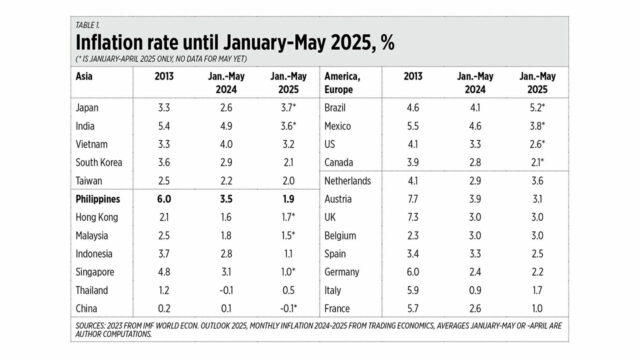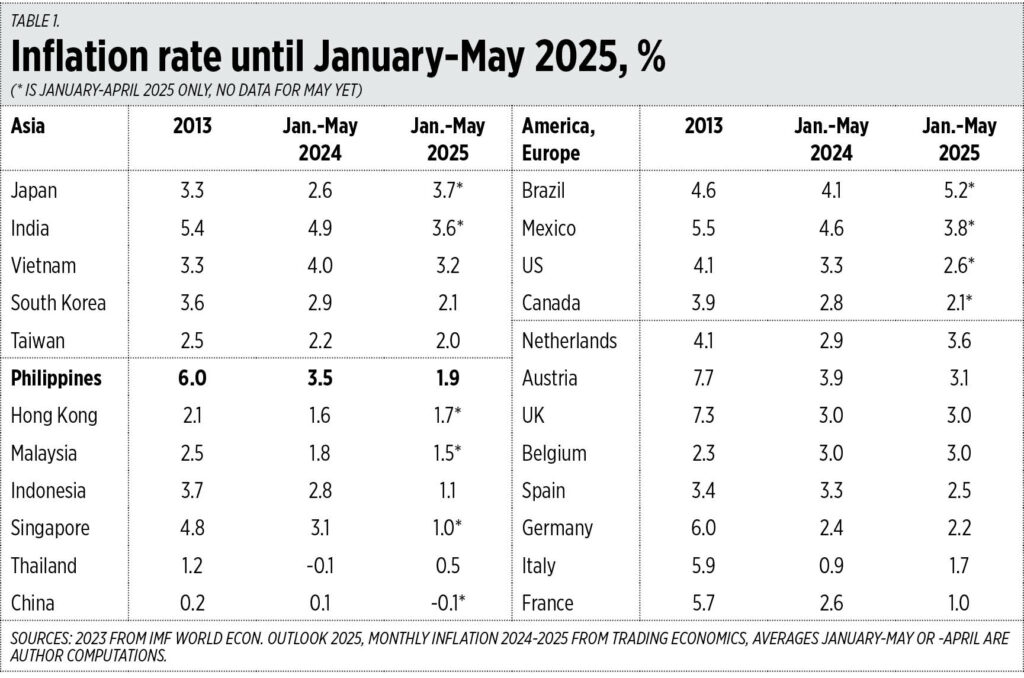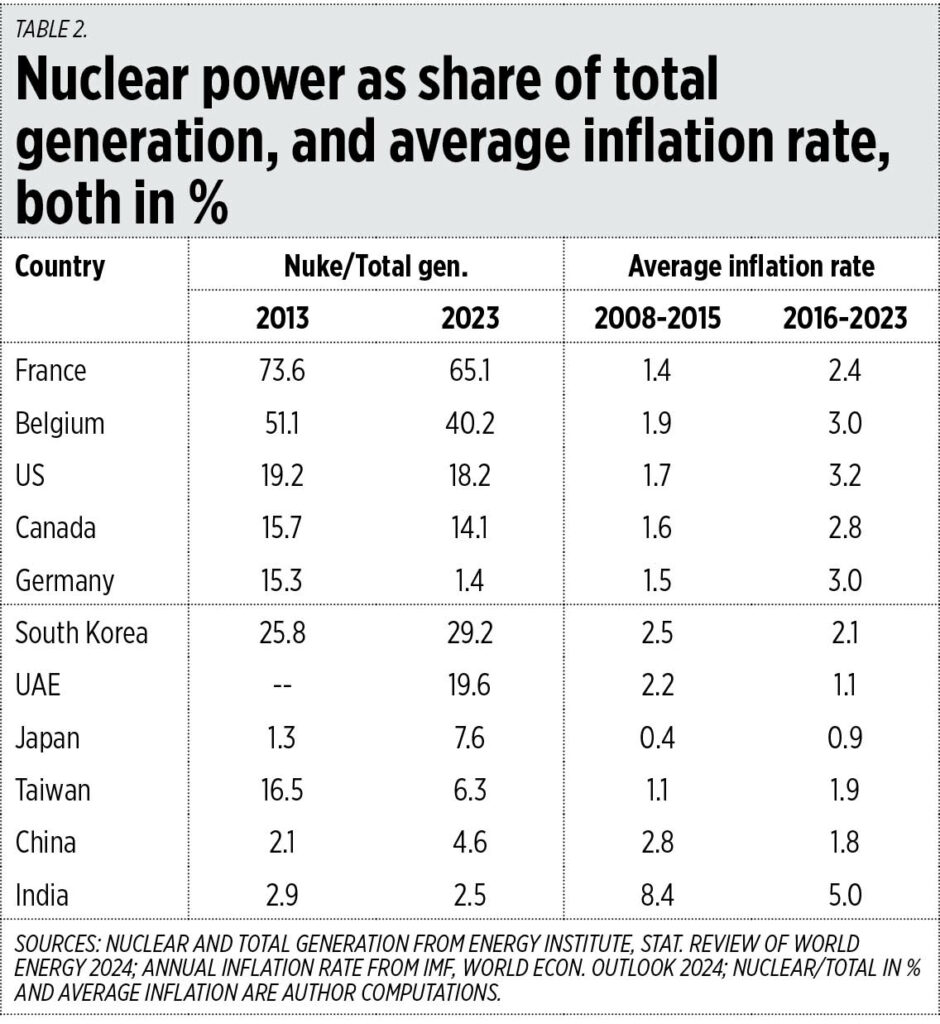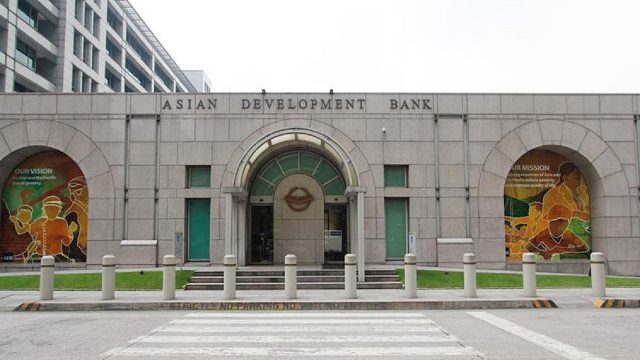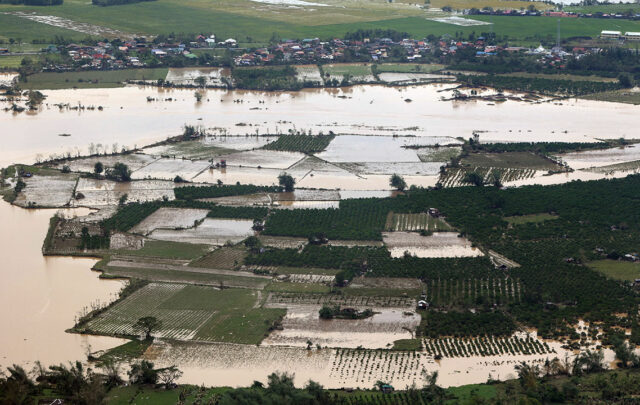On declining inflation and the PhilAtom bill
Last week, the Philippine Statistics Authority (PSA) released the country’s inflation rate for May and it was another piece of good news, it was only 1.3%, from 1.8% in March and 1.4% in April. Average inflation for January-May this year is only 1.9%, while that of Taiwan, South Korea, Vietnam, India, and Japan ranged from 2% to 3.7%.
Even the big economies of America and Europe have higher inflation rates this year than the Philippines, except Italy and France (see Table 1).
The persistent argument here that “high inflation contributed to the defeat of many administration candidates” in the last election is wrong for three reasons.
One, our inflation rate this year was low up to the month of the election itself.
Two, assuming that high inflation in 2023 and 2024 affected voters’ behavior, then it should have been reflected in various surveys like the SWS survey of May 6 but it did not. The survey showed that nine of 12 administration Senatorial candidates would win. It is not possible that between May 6 to May 12 the voters suddenly factored in the high inflation of the last two years and thus they voted against many administration candidates.
And three, elections are a political exercise with many political factors to consider, and many political actors and players that affect the political behavior of the voters and candidates themselves. Like the two senatorial candidates of the current administration who were belatedly endorsed by opposition leader Vice-President Sara Duterte and won. It is dishonest to downplay political factors just to hit the economic performance and secretaries of the administration.
NUCLEAR BILL
Meanwhile, the bill to establish a Philippine Atomic Energy Regulatory Authority (PhilAtom) was passed on second reading at the Senate last week. It was passed by the House of Representatives (HOR) in November 2023. If the Senate passes it on third and final reading on June 9, then the HOR adopts the Senate version and both Houses ratify it by Wednesday, then President Ferdinand R. Marcos, Jr. can sign it into a law. Otherwise, it will be back to square one in the next Congress that will start next month.
A review of the Philippines’ nuclear energy development can be gleaned from these recent reports in 2025 in BusinessWorld, written by Sheldeen Joy Talavera: “Filipino engineers gearing up for nuclear-powered future” (Jan. 10), “KEPCO reaffirms plan to invest in PHL RE, nuclear, smart grid projects” (Feb. 27), “Meralco in talks with foreign firms for new nuclear energy partnership” (March 24), “PNRI says nuclear safety fears can be addressed via regulation” (April 29), “Meralco awaits Senate action on proposed nuclear regulatory body” (May 5), and, “Meralco to explore partnerships with South Korean power firms” (June 2).
In many countries, there is a modest correlation between the high use of nuclear energy with low inflation rate. I computed the share of nuclear generation to total power generation of several countries, then paired it with the average inflation rate over a similar period.
Countries or economies with declining nuclear to total generation ratio experienced rising inflation rates: France, Belgium, Germany, and Taiwan. Some countries with a slight decline in the ratio but which experienced a rise in their inflation rate were the US, Canada, and Japan.
Countries with a rising nuclear to total generation ratio that experienced declining inflation rates were South Korea, China, India, and the United Arab Emirates (see Table 2).
Nuclear power has the highest energy density among all energy sources, so it is the most efficient, with the highest electricity output per unit of input. Nuclear power is generally safe — the last major nuclear accident was in Chernobyl, Ukraine (then part of the USSR) in 1986. The Fukushima incident in Japan in 2011 has no deaths or direct casualties, only a large-scale evacuation of people as a precaution.
The refurbishing and revival of the Bataan Nuclear Power Plant (BNPP) is the easiest and fastest way to have nuclear energy in the country. BNPP has “sister” nuclear plants in Brazil, Slovenia, Spain, and South Korea — all built by Westinghouse in the 1970s, all of which experienced cost escalations during their construction periods as safety measures increased, all of which were commissioned in the 1980s, all of which are running until now and producing cheap and stable electricity.
We missed the train of nuclear power development since the 1980s. This decade we have a chance to revive the BNPP, which has the potential to generate about 4,600 gigawatts per hour per year, higher than the combined generation of solar and wind yearly. The enactment of the PhilAtom bill into law is a major part of this great opportunity.
Bienvenido S. Oplas, Jr. is the president of Bienvenido S. Oplas, Jr. Research Consultancy Services, and Minimal Government Thinkers. He is an international fellow of the Tholos Foundation.

